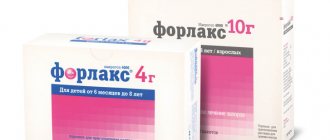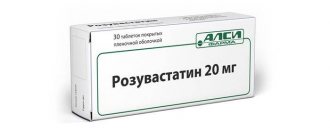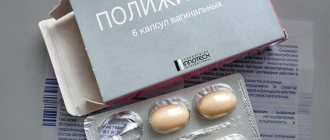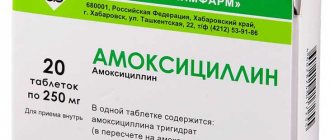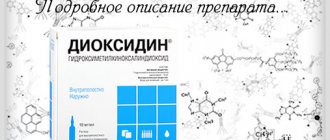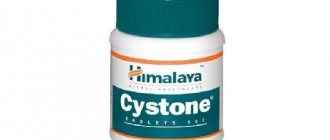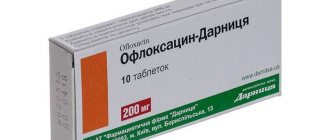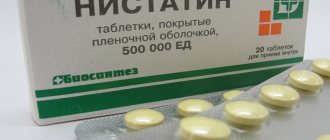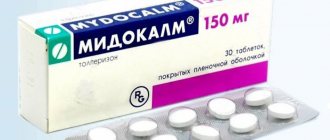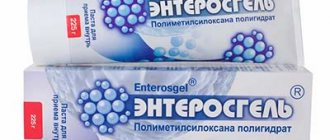Instructions for the use of Movalis injections characterize the drug as one of the most effective remedies against inflammatory pain. The abstract indicates significant differences between this medication and drugs included in the same pharmacological group.
Movalis gained an exceptional position due to its high selectivity - the ability to act only on a certain type of prostaglandins. Due to this quality, it reaches its goal faster and affects other organs and systems to a lesser extent.
Composition and release form of the drug
German, Spanish, Italian manufacturers produce Movalis injection solution in 1.5 ml packaging. It is a transparent yellowish liquid with a slight greenish tint without any specific odor. The solution is placed in colorless glass ampoules, which are contained in 3 or 5 pieces in the contour cells of plastic blisters. Secondary packaging is a cardboard box with an annotation inserted inside. The active ingredient of the drug is meloxicam. The auxiliary composition is represented by the following components:
- meglumine;
- glycofurol;
- poloxamer;
- glycine;
- sodium hydroxide;
- sodium chloride;
- water for injections.
Additional ingredients ensure almost 100% bioavailability and maximum absorption of meloxicam into pathologically damaged tissues, as well as synovial fluid. In addition to the injection solution, the Movalis therapeutic line includes tablets, rectal suppositories, and suspension.
Let's compare Movalis or Diclofenac: which is better and what are these drugs used for?
Frequency of use of the drug
Despite the fact that the drug is a selective anti-inflammatory drug and is less dangerous than COX-1 inhibitors, it still has contraindications and side effects. Therefore, as soon as the patient feels that the pain has disappeared, the appointment should be discontinued, even if a longer treatment is prescribed.
For difficult-to-treat, prolonged pain, the course of treatment can be relatively long. To reduce damage to health, it is additionally worth taking cytoprotectors.
Recommendations regarding the duration of the course should be obtained from your doctor, and in no case should you look for them on the Internet. The maximum period for taking the drug is not indicated by doctors. Everything is individual and depends on the diagnosis and the body’s sensitivity to meloxicam. Some patients will have to limit themselves to 3 days, others can take Movalis for several weeks (together with cytoprotectors), and for others the medicine is generally contraindicated.
The standard course of injections in most cases is 3-5 days once a day and is prescribed in the first days of an exacerbation of the disease, when the inflammatory process is most pronounced. Then you can switch to tablet form or rectal suppositories.
Operating principle
The therapeutic effect of Movalis is due to its active ingredient meloxicam, which is a non-steroidal anti-inflammatory drug (NSAID). It inhibits the enzyme cyclooxygenase, which stimulates the biosynthesis of mediators of pain, inflammation, and fever - prostaglandins.
Meloxicam is a selective NSAID. It selectively blocks cyclooxygenase-2, preventing the production of prostaglandins directly in inflammatory foci, and not in the kidneys and gastrointestinal tract. This selective action of Movalis explains the narrower list of its side effects compared to non-selective NSAIDs.
Meloxicam prevents the migration of leukocytes and macrophages into tissues damaged by destructive or inflammatory processes. This prevents the formation of edema, normalizes microcirculation, lymph and blood circulation. Parenteral administration of the solution allows you to quickly stop acute and chronic inflammatory processes in the joints, eliminate pain, and reduce general and local body temperature.
Pharmacological properties and pharmacokinetics
Movalis is included in the category of non-steroidal, i.e. non-hormonal, anti-inflammatory drugs (NSAIDs). Its action is to suppress the inflammatory process. It follows that it is capable of relieving pain and, to some extent, fever.
The mechanism of action of the substance is based on the suppression of enzymes (cyclooxygenase or COX), which activate the production of prostaglandins.
It is with the release of prostaglandins that inflammation and, accordingly, pain begins.
COX is present in many organs and tissues. But the types of this enzyme behave differently. Cyclooxygenase of the first type is involved almost constantly. It not only takes part in inflammatory processes, but also in life support reactions of the body. For example, this enzyme is part of the mechanism of self-regulation of the liver and blood clotting.
Type 2 cyclooxygenase is activated only under certain conditions. It is triggered by some kind of irritation. Pharmacists are faced with the task of learning to “turn off” this particular enzyme without affecting the first type of COX, thereby not disrupting the course of natural processes.
In what cases is Movalis used?
Movalis injection solution is intended for symptomatic treatment of inflammatory and degenerative pathologies of the musculoskeletal system. It is prescribed to patients with relapses of cervical, thoracic, lumbosacral osteochondrosis, and intervertebral hernias. The drug is used to relieve acute pain in arthritis - rheumatoid, gouty, psoriatic, reactive, infectious. Indications for the use of the drug include the following joint diseases:
- deforming arthrosis, including coxarthrosis, gonarthrosis;
- ankylosing spondylosis;
- glenohumeral periarthritis;
- lateral, medial epicondylitis;
- lumbago, sciatica.
Parenteral administration of Movalis can be prescribed to patients with rheumatism, radiculitis, and muscle pain. It is used for injuries (fractures, dislocations, ruptures of ligaments, tendons) to relieve acute, piercing pain.
Analogs
In conducting scientific research and developing a new effective active substance, Boehringer spent significant financial and time expenditures. The finished medicine underwent long clinical trials.
These factors have contributed to the high cost of Movalis. Other pharmaceutical companies simply bought a patent for the production of ampoule meloxicam and used a ready-made formula, so their products are significantly lower.
As practice shows, original drugs are always better than generics. But the side effects caused by the active substance are no different.
Movalis has a large number of analogues for the active substance, both domestic and imported:
- Meloxicam. In terms of effect, bioavailability and other characteristics, it is an absolute analogue of Movalis. The difference is that Movalis is a patented name used by a powerful European pharmaceutical concern. This determines its popularity and higher cost.
- Amelotex. Many patients are interested in what is better than Movalis or Amelotex in injections. The Russian-made drug Amelotex belongs to the same group as Movalis, has the same active ingredient and has similar characteristics. After injection of Amelotex, the maximum concentration of the active substance in the blood is achieved within 2-3 hours. Therefore, in comparison with Movalis, Amelotex acts twice as fast.
- Arthrozan. The drug is one of the best Russian analogues of Movalis. It does not have a strong inhibitory effect, is effective and safe. The main advantage is the possibility of long-term use (up to several months or years).
Directions for use and dosage
Movalis injection solution is intended for deep injection into the large buttock muscle. Single doses of the drug are determined by the attending physician, taking into account the severity of symptoms, type of pathology, and general health of the patient. To eliminate acute pain, a single dose of 15 mg of Movalis is sufficient. If necessary, reuse of the drug is allowed. For patients with severe pathologies of the liver and kidneys, predisposed to allergic reactions, the drug is prescribed at a dose of 7.5 mg.
For adults
Before the injection, the skin over the gluteus maximus muscle is treated with alcohol-containing antiseptic solutions. Before you begin to slowly inject the drug, you should make sure that the needle has not injured a blood vessel. After removing it from the muscle, it is necessary to treat the skin again with antiseptics.
If a second injection is required, it is carried out in another gluteal muscle. If severe pain occurs during the procedure, you should stop administering the solution. For patients with hip replacements, an injection is given into the muscle of the opposite buttock.
For children
Movalis injection solution is not used in the treatment of children under 18 years of age. If treatment with drugs containing meloxicam is necessary, tablets of the same name or rectal suppositories can be used in dosages calculated by the doctor.
For pregnant women and during lactation
Systemic agents that inhibit the production of prostaglandins from arachidonic acid are undesirable to use during pregnancy and breastfeeding. When planning a pregnancy, doctors also recommend stopping the use of any dosage form of Movalis. Treatment with drugs containing meloxicam increases the likelihood of miscarriage and congenital anomalies.
In the early stages of pregnancy, Movalis can be prescribed to a woman only in case of urgent need, when the use of safer drugs has not given the desired therapeutic result. The analgesic is used once in a minimal dose.
In the third trimester, therapy with Movalis is not carried out due to the high risk of bleeding, inhibition of uterine contractions, and disruption of labor.
Meloxicam quickly passes into breast milk, so when using it, lactation must be stopped for a while.
Composition and pharmacological action of Movalis
The drug is produced in the form of yellow tablets with a round shape. The main active ingredient in the product is meloxicam. In addition to it, the tablets contain additional ingredients that perform auxiliary functions.
These components are:
- sodium citrate;
- lactose monohydrate;
- microcrystalline cellulose;
- povidone;
- anhydrous colloidal silica;
- magnesium stearate;
- crospovidone.
The tablet form of the drug is produced in two dosages, the content of the active compound can be 7.5 and 15 mg.
The use of the drug reduces the intensity of pain, and also has an antipyretic and anti-inflammatory effect on the affected area.
Non-steroidal anti-inflammatory drug (NSAID), refers to enolic acid derivatives. The pronounced anti-inflammatory and analgesic effect of meloxicam has been established in all standard models of inflammation.
The mechanism of action of meloxicam is its ability to inhibit the synthesis of prostaglandins.
Clinical studies have established that NSAID gastropathy develops significantly less frequently when taking meloxicam than when using other NSAIDs. Vomiting, abdominal pain, nausea and dyspepsia were reported significantly less frequently in patients taking meloxicam than in patients taking other NSAIDs.
The active compound is well absorbed from the gastrointestinal tract. Food intake does not have a significant effect on the rate of absorption of the drug. The maximum concentration of the active component in the body is achieved 5-6 hours after a single dose. Bioavailability reaches 89%. The drug binds well to plasma proteins, the binding percentage reaches 99%
Metabolism occurs in liver tissue. Metabolites are chemically inactive compounds. It is excreted in equal parts in urine and feces.
Pros
pros
- The drug can quickly accumulate in the body and be slowly eliminated
- Has a minimum number of contraindications and side effects
- Has a strong therapeutic effect
- Does not affect psychomotor reactions
- Convenient dosage form
Cons
Minuses
- Lack of possibility of therapy during pregnancy and lactation
- Not recommended for people intolerant to lactose and other monosaccharides
- Sold in pharmacies only with a prescription
- Has a high cost
Contraindications and side effects
Movalis injections are not prescribed to patients who have demonstrated hypersensitivity to its auxiliary ingredients and meloxicam. The drug is not used during relapses of erosive and ulcerative lesions of the stomach and duodenum, hyperacid or erosive gastritis. Contraindications to the use of Movalis are also active gastrointestinal bleeding, hematopoietic and circulatory disorders.
The drug is not included in the therapeutic regimens of patients with severe renal, hepatic, heart failure, inflammatory bowel pathologies, such as Crohn's disease or acute ulcerative colitis.
| Vital system or organs | Possible side effects of Movalis in the form of an injection solution |
| Lymphatic and circulatory | Anemia, leukopenia, thrombocytopenia, changes in the number of blood cells and the percentage of different types of leukocytes |
| Immune | Local and systemic allergic reactions that developed due to individual intolerance to the ingredients of the drug |
| Nervous | Headaches, dizziness, impaired coordination of movements |
| Sense organs | Vertigo, conjunctivitis, visual disturbances, decreased visual acuity, tinnitus |
| Cardiovascular | Increased blood pressure, feeling of a rush of blood to the face, increased heart rate |
| Respiratory | Bronchospasms in patients with hypersensitivity to HPVS or acetylsalicylic acid |
| Digestive | Pain in the abdomen and epigastric region, increased gas formation, constipation or diarrhea, attacks of nausea, vomiting, belching |
| Liver and bile ducts | Changes in liver functional parameters |
| Skin and deeper soft tissues | Angioedema, itching, rash, allergic reactions such as urticaria, erythema multiforme, photosensitivity |
| Urinary | Urinary disorders, acute renal failure, changes in kidney function parameters |
Movalis - contraindications
According to the annotation, the drug should not be used for the following conditions:
- heart failure;
- blood clotting disorder;
- severe liver or kidney failure;
- polyps in the nasal cavity;
- bronchial asthma;
- hypersensitivity to components;
- age up to 14 and after 80 years;
- inflammation of the rectum or anus (for suppositories).
According to the instructions, it is not advisable to use Movalis during pregnancy, especially the first two trimesters, during which the development of fetal organs occurs. The period of breastfeeding is an absolute contraindication to taking the drug. If therapy is necessary during lactation, then feeding the baby should be stopped. Prescribing the drug to women wishing to become pregnant should be done with caution, because the drug affects fertility. As for alcohol, it is not a contraindication.
Overdose
Exceeding single doses of Movalis is clinically manifested by drowsiness, fainting, nausea, vomiting, stomach pain, gastrointestinal bleeding, acute renal failure, arterial hyper- or hypotension, asystole, respiratory arrest. There is no antidote, but the use of Cholestyramine helps to eliminate meloxicam from the body more quickly.
Dosage and form of taking Movalis
The drug is available on the market in a variety of forms, which greatly simplifies the choice of method of administration for patients: tablets, rectal suppositories, injection solutions (injections, preferably, only at the beginning of the course - the first couple of days).
- In most cases, the drug is taken in tablet form, orally, 1 tablet 1 time per day before meals.
Accepted dosages of Movalis for the treatment of diseases:
- Osteoarthritis – 7.5 mg/day. The dose can be increased to 15 mg/day as needed.
- Rheumatoid arthritis – 15 mg/day. If treatment shows rapid results, the doctor may reduce the dose to 7.5 mg/day.
- Ankylosing spondylitis - 15 mg/day. If treatment shows rapid results, the doctor may reduce the dose to 7.5 mg/day.
The maximum permissible daily dose of the drug should not exceed 15 mg. If the patient is at risk of side effects or the patient is diagnosed with renal failure or is on hemodialysis, then the dosage should not go beyond the figure of 7.5 mg. For children under 12 years of age, taking the drug is contraindicated; from 12 to 18 years of age, the permissible dose of the drug should not exceed 0.25 mg per 1 kg of the child’s body.
There is currently no information about cases of overdose with Movalis. Symptoms may appear, as with an overdose of other non-steroidal drugs.
Drug interactions
It is not recommended to use Movalis with other NSAIDs due to a significant increase in the risk of ulceration of the gastric mucosa. It is not used in conjunction with antiplatelet drugs, serotonin reuptake inhibitors, anticoagulants, thrombolytics, as this will cause bleeding.
Meloxicam injections are not prescribed to patients taking lithium medications. If the patient uses Methotrexate, then Movalis is not included in the therapeutic regimen or treatment is carried out with constant monitoring of liver and kidney function indicators.
Instructions for use of the drug
It was experimentally found that the result of using the drug will depend on the dose. Using the same principle, it was decided that the optimal amount of compound required for one injection is 7.5 or 15 mg. It is at this dosage that the active substance exhibits the highest activity against COX-2 and affects COX-1 less.
While taking the medication, there is a high probability of side effects, so it is necessary to follow two principles: choose the lowest dosage possible and shorten the course of treatment as actively as possible.
Movalis injections are given intramuscularly only at the acute stage of the process (during the first 2-3 days). In the future, they switch to other forms, for example, tablets.
Single dose – 0.5 or 1 ampoule. A whole ampoule is the maximum daily dosage. Patients with kidney disease are given no more than 7.5 mg per day. 15 mg is the total maximum daily amount of active substance in all forms of the drug. If Movalis injections and suppositories or tablets are prescribed simultaneously, the total amount of meloxicam should not exceed the given value.
Movalis is not prescribed together with other NSAIDs and, moreover, is not mixed in the same syringe with other medications. Injections are administered once a day or every other day deep into the muscle. The medicine is not suitable for intravenous infusion.
Reviews from patients and opinions of specialists
Doctors prefer Movalis due to its rapid manifestation of analgesic, anti-inflammatory, and anti-exudative effects. The drug is characterized by high clinical efficacy and a low likelihood of developing local and systemic adverse reactions.
Patients appreciated the ability of the drug to eliminate the most severe pain that occurs during exacerbations of pathologies of the joints and spine. Its undoubted advantage is the possibility of one-time use.
Movalis - analogues
This drug has many medications that are similar in pharmacological action, but cheaper in price. However, do not forget that an inexpensive drug may be much worse in effectiveness. The most famous substitute for Movalis is Artrosan. Other analogues of the drug:
- Celebrex;
- Nimesil;
- Mydocalm;
- Diclofenac;
- Voltaren.
Conditions for dispensing from pharmacies
To preserve the medicinal properties, the drug should be stored at an air temperature of no more than 30 degrees Celsius, ampoules should not be exposed to direct rays of the Sun. Shelf life – 5 years from the date of issue, information about the expiration date is indicated on the packaging. After this time, the drug must be disposed of; treatment with ampoules that have expired is unacceptable.
Movalis can only be purchased at a pharmacy with a prescription from your doctor. The prescription must be certified by the seal of a medical institution and have the signature of a specialist.
Price and analogues
Movalis is sold in cardboard packs containing 3 or 5 ampoules of the drug. The price for an injection solution ranges from 577 to 850 rubles, depending on the price list of the pharmacy chain. In addition, the drug is produced in the form of tablets, capsules, oral suspension, and rectal suppositories.
There are substitutes for the drug, some analogues are cheaper.
Russian analogues of Movalis:
- Amelotex. Available in the form of gels, suppositories, tablets and ampoules. The number of ampoules in the package is similar to Movalis;
- Bi-xicam. Available in tablets and solution form for intramuscular injection;
- Arthrozan. A well-proven drug, it is available in pharmacies in the form of injection ampoules and tablets. 10 injection ampoules cost about 550 rubles;
- Movasin. Available in the form of an injection solution.
Among the analogues of the tablet form, we can note Diclofenac, Nemesil, Voltaren.
Foreign analogues:
- Meloxicam-Teva. Analogue of Movalis, produced in Israel;
- Meloxicam DS. Produced by Chinese pharmaceutical companies;
- Mesipol. Production – Poland;
- Liberium. Available as an intramuscular solution and tablets. Production - Ukraine.
The decision to replace Movalis with an analogue should be agreed with the attending physician. Analogue drugs have their own dosage and treatment regimen, so self-prescription of the drug is not allowed. In addition, many of the analogues are sold, like Movalis, only with a prescription issued in a medical institution in accordance with current rules.
Cost and patient opinions
The price of Movalis in tablets (10 pieces with an active substance concentration of 15 mg) is 500 rubles, a similar drug (20 pieces per package) costs 697 rubles. Movalis with a concentration of the main component of 7.5 mg costs approximately 718 rubles for 20 pieces per package. The specific amount depends on the city of purchase and the pharmacy chain.
Many people who have used Movalis respond positively to the drug. They like the ease of use and quick results. It is necessary to follow the dosage and doctor's instructions. Failure to comply with special rules leads to side effects.
Read also: Injections for inflammation
Brief video - information about the drug Movalis:
Did you like the article? Subscribe to site updates via RSS, or follow updates on VKontakte, Odnoklassniki, Facebook, Twitter or Google Plus.
Subscribe to updates by E-Mail:
Tell your friends!
Discussion: 3 comments left.
I can say that even if gastrointestinal erosions are not exacerbating, taking Voltaren with them is dangerous. I know it from myself. I drink it only in extreme cases, if the gel no longer helps, after meals and in parallel with omeprazole. Plus, I immediately start taking Combilipen, Mydocalm, Elbon Ultra to maximize the effect. In this way, the course of administration can be reduced to 3-5 days, and the harm to the stomach is minimal.
I used to focus on injections, I thought they were less harmful to the stomach, but it turned out that they were the same... now I take pills. But I try to do this when absolutely necessary, I support myself by swimming, and I drink Protekta regularly. It seems to me that the main thing here is not to let yourself go, then you will need painkillers less often
If you take care of yourself and regularly treat yourself with protekt, then such pills and injections will not be needed at all. Pain only bothers you when you don’t pay attention to the disease.
Precautionary measures
Movalis is a potent drug; during treatment you should follow a drinking regime and take into account compatibility with other drugs.
In order to reduce the risk of bleeding, it is not recommended to combine meloxicam injections with:
- drugs whose action can inhibit the synthesis of prostaglandins;
- antidepressants belonging to the group of serotonin uptake inhibitors.
The combination of diuretics and Movalis can lead to the development of renal failure caused by dehydration. Interaction of meloxicam with hypoglycemic drugs has been proven; the use of the latter should be avoided if possible.
Separately, it is worth noting the decrease in the effectiveness of intrauterine contraceptive devices. Women who are planning a pregnancy should also refuse treatment with Movalis - the drug reduces the likelihood of conception.
It is prohibited to mix Movalis and any other drug for injection in the same syringe. This may lead to the development of unwanted side reactions and complications.
Taking Movalis in any form is not compatible with drinking alcohol. The combination of alcoholic beverages and medications can cause the development of:
- swelling;
- itching, allergic skin rashes;
- blood pressure surges;
- internal bleeding.
In addition, meloxicam in combination with alcohol significantly increases the load on the patient’s kidneys, and renal failure may occur.
Movalis doctor reviews
Mavalis
Meloxicam is the active ingredient in movalis, which has anti-inflammatory, analgesic and antipyretic effects.
Due to the fact that the ampoule volume is only 1.5 ml, the injection is less painful than other NSAIDs.
Indicated for the symptomatic treatment of pain in diseases of the musculoskeletal system.
Contraindicated during lactation, pregnant women, children under 18 years of age, in the presence of gastrointestinal bleeding, gastric or duodenal ulcers, ulcerative colitis, heart and kidney failure.
Although movalis is less aggressive to the gastrointestinal mucosa, unlike other NSAIDs, when using it, it is necessary to protect the mucous membrane.
One injection lasts for 24 hours.
Movalis is a worthy representative of the group of non-steroidal anti-inflammatory drugs
Movalis (INN Meloxicam) was developed in 1995 and by 2000 was used in more than 40 countries. Despite almost 20 years of experience in the pharmaceutical market, Movalis occupies a worthy place among the drugs in its line. Numerous multicenter randomized studies have shown the high effectiveness and safety of the drug Movalis in the treatment of rheumatological diseases.
Movalis is a selective inhibitor of one of the main mediators of inflammation - the enzyme cyclooxygenase 2. Due to its selective action, when using Movalis, side effects rarely develop - in the form of inflammatory diseases of the stomach (NSAIDs - gastropathy, exacerbation of chronic stomach diseases), and side effects and from the cardiovascular and excretory systems.
Movalis is available in various forms: solution for injection, in tablet form, in the form of a suspension, and also in the form of suppositories for rectal administration. Thanks to this variety, you can choose the most convenient form for each patient.
However, pregnant women, as well as during lactation, should not use Meloxicam, since this drug penetrates the placenta and into breast milk.
In my practice, I use this drug quite often and I can say that if all recommendations for frequency of administration and duration of therapy are followed, patients rarely develop adverse reactions.
Movalis
Movalis is an original German non-steroidal anti-inflammatory drug, the main driving force of which is the substance Meloxicam. Prescribed to eliminate symptoms of arthritis of various origins, arthrosis, ankylosing spondylitis. Effective for any inflammatory processes. As a representative of the group of non-steroidal anti-inflammatory drugs, Movalis also has analgesic and antipyretic effects.
Its high effectiveness has been clinically proven for all three types of effects. It is the founder of all products created on the basis of Meloxicam.
It is not often used in pediatric practice. Basically, these are children with congenital and acquired pathologies of the musculoskeletal system, children after severe injuries. Also, the infrequent use of Movalis is associated with age restrictions. For different forms of drugs (Meloxicam preparations, the main active ingredient, are produced by various companies in the form of tablets, suspensions, ointments, rectal suppositories and injection solutions), age restrictions are different. Therefore, most often you have to deal with tablet forms of the drug.
High bioavailability and short onset of action help to achieve rapid improvement in the child’s condition with acute pain in the joints. Course therapy helps to significantly improve the quality of life of children.
The drug is dosed individually to reduce the risk of side effects. I did not observe any side effects with this approach to therapy.
In general, the drug Movalis has proven itself to be a good remedy, providing an absolute effect in terms of complete elimination of pain and reducing the severity of inflammation in the affected joints in children over 15 years of age (or 12 years for certain analogues).
This is interesting: Damage to the dorsal horns of the spinal cord and other structures: symptoms
How to give a Movalis injection
There are several recommendations on how to inject correctly and how deep:
- the drug does not mix with other drugs and/or solvents;
- the required amount of medicine is drawn into the syringe through a needle after opening the ampoule;
- before insertion, the skin is treated with an antiseptic;
- the medication is injected slowly into the relaxed gluteal muscle;
- the needle plunges as deep as possible;
- After removing the needle, a cotton swab soaked in alcohol is applied to the injection site.
Advice! Carrying out the injection yourself is quite problematic; it is recommended to involve someone close to you for this.
Movalis is a modern, effective drug, the use of which helps to eliminate the symptoms of degenerative joint diseases, eliminate or at least reduce pain in the back and joints.
The medicine is well tolerated, and adverse events are extremely rare and in most cases are not significant. However, the use, as well as the selection of analogues, must be agreed with your doctor. And the daily dose must strictly comply with the recommended one, otherwise it is possible that health problems will worsen. Therefore, strictly follow the instructions and be healthy.
Advantages and disadvantages of the drug
Movalis in injection form is characterized by the following advantages:
- Quick results.
- No need for frequent injections.
- Affordable price.
- No toxic effects on the liver.
- Painless management.
- No destructive effect on cartilage structures.
The disadvantages of the drug include a wide range of possible adverse reactions, contraindications, and lack of influence on the course of the pathological process.
What to do if you bruise your ankle
Have you been trying to heal your JOINTS for many years?
Head of the Institute for Joint Treatment: “You will be amazed at how easy it is to heal your joints by taking every day...
Read more "
This is one of the most insidious and painful injuries, and everyone needs to know about it. Due to its structure, the ankle is particularly susceptible to bruises, so it is important to immediately recognize them by symptoms. Let's look at the dangers of a severe bruise of the ankle joint, and how to treat such injuries.
Main reasons
The peculiarity of this joint lies in its anatomy. The lower edges of the fibula and talus seem to stick out to the side, which already requires caution. In addition, there is no thick fat layer or strong subcutaneous tissue, which increases the risk of injury. This also applies to the tissues surrounding the tibia and metatarsal bones, which are also part of the structure of the joint.
According to the ICD classification - 10, this type of bruise refers to superficial injuries. It is assigned the code S90.0.
The causes of damage may be:
- falling (even from a small height);
- blows;
- weakness of the joint capsule and ligaments;
- careless and sudden movement (if a person is overweight).
Symptoms of injury
An ankle injury has the following symptoms:
- long-term (up to several days) pain, which intensifies when trying to take a step. At rest, it is not so noticeable or is completely absent;
- the whole foot hurts when walking;
- pronounced lameness;
- swelling or swelling of the ankle or foot;
- hematomas indicating rupture of small vessels;
- If your toes go numb, then the case is serious.
Only a doctor can determine ankle damage, and before his arrival, direct all efforts to provide first aid.
First aid
The order of its provision in case of such damage is as follows:
- First, the leg is positioned so that it is higher than the head (so as not to disrupt the blood flow in the area even more).
- Then the site of the bruise is rubbed with an anesthetic emulsion like ricinol so that the swelling does not spread throughout the entire foot.
- Then immediately apply something cold: ice or any product from the freezer. This dulls the pain and relieves swelling. You will have to hold it for up to an hour, longer is undesirable.
- In the first minutes, a bandage (both elastic and simple) will come in handy. They wrap it around the ankle - starting from the toes and wrapping it up to the top of the joint.
In case of acute pain, the victim should be given an analgesic or an anesthetic injection, not forgetting to then tell the doctor about it.
Diagnosis of injury
It all starts with an initial examination - the specialist finds out how the injury was sustained and carefully examines the ankle itself, paying special attention to swelling and bruising.
This may be due to pain; the doctor will move the ankle to confirm the diagnosis. Based on the results of the examination, an x-ray of the ankle is prescribed. To get a complete picture, they may be referred for additional examination of the foot and lower leg.
If there is a suspicion of a stressful injury (due to shock overloads), the victim is recommended to undergo an MRI examination. For elderly patients, such procedures are rather the norm (the load on the ankle is consistently high, and with age, ligaments and tissues lose elasticity).
To assess the general condition of the body, you will have to take blood and urine tests. Venous blood sampling is done rarely, in case of underlying complications.
In difficult cases, a stress test may be necessary. It is used mainly to identify fractures, but the line between such a displacement and a deep bruise requires clarification using this method.
Recommendations on how to treat a bruised ankle joint are given by a traumatologist. If such a nuisance occurs against the background of a disease of the internal organs (especially in a chronic form), a surgeon and a therapist get involved. They prescribe a course of treatment for each specific case.
Treatment methods
Effective recovery requires an integrated approach, so doctors often prescribe different manipulations and procedures.
The same banned issue for which Ernst fired Malakhov!
Joints and cartilage will be cured in 14 days with the help of ordinary...
Joint immobilization
The method is conservative, but effective, especially when carried out in the first couple of hours after injury.
In simple cases, the doctor will apply a bandage, which is removed at night. With this treatment, a film like “Polimedel” is effective, which improves blood circulation and is applied 2-3 times a day for 30 minutes.
In case of severe pain, plaster splints are placed:
- a blockade of the damaged area is carried out (a 1% procaine solution is injected);
- the foot is placed at a right angle outward (as far as possible);
- plaster is applied from the upper third of the leg to the fingertips.
The standard period of immobilization is 7-10 days, although in particularly difficult cases it can last up to 5-6 weeks.
All this time, the patient needs a cane to walk, and in a supine position a pillow is placed under the foot.
Medications
Special gels and ointments are used already on the second day after injury. Prescriptions prescribe anti-inflammatory drugs containing non-steroidal compounds.
These are the formulations ketonal, movalis, nimesulide, nise, febrofide and similar drugs. During treatment, throbbing headaches may also occur, which are relieved by ibuprofen or imet. True, the regular need for them is a serious “red flag”, about which it is better to inform your doctor.
Compresses
Compresses can be applied 6–7 days after the accident.
The compress is placed so that the skin does not become damp, so watch the time.
A bruised ankle joint and its treatment at home are often accompanied by the application of an alcohol compress. Everything is extremely simple - apply a bandage soaked in a warm solution of water and alcohol at night. These components are taken approximately equally.
This procedure is preceded by treatment with ointment, although it is better to exclude some compounds so as not to disrupt the skin’s protective mechanisms.
Physiotherapeutic procedures
Such procedures are prescribed after 7-10 days. At earlier stages, physiotherapy is not used (warming up can cause burns).
The type of impact is selected by the doctor based on the dynamics of recovery and the general condition of the victim.
It could be:
- paraffin therapy, which reduces the intensity of inflammation;
- diadynamic currents for pain relief;
- magnetic therapy, which removes swelling and normalizes blood flow;
- ultrasound. After it, the functioning of blood vessels and lymph nodes improves. And ointments penetrate deeper, which speeds up treatment;
- UHF currents restore metabolism and also “accelerate” the blood;
- balneotherapy (mud), which strengthens tissues.
Massage
It is practiced within 2-3 days. The main thing is not to harm the affected ligament.
The shins and fingers are massaged first. If after a couple of days the pain gradually goes away and the swelling has become less, you can easily rub the joint itself. In this case, movements should be smooth, without sudden changes in direction.
Elements of gymnastics are often included here. For example, the same fingers can be bent in any position (sitting or lying down), complementing such activity with rotational movements in the ankle. As you recover, their scope increases.
Physiotherapy
Exercise therapy exercises in case of a bruise are simple. Small loads can be applied as early as 3-4 days and they boil down to active work of the toes and tension of the muscles of the lower leg and foot.
For older patients, the number of approaches is slightly reduced - to 7 or 8.
These simple exercises are done three times a day, each with 10 approaches. After a week, the task becomes a little more complicated, adding:
- careful rises on toes;
- stretch marks. By applying force to the expander, bend the foot. The leg is turned outward and inward;
- traction. Use your toes to grab the leg of the chair and pull it towards you. Then the weight is increased (other objects can be placed on the same chair);
- walking at a comfortable pace on a flat surface (1.5-2 hours).
Please note that such activities should not cause pain.
You can learn more about the set of exercises for ankle joint damage in the video.
Folk remedies
When considering a bruised ankle joint, it is impossible to bypass treatment with folk remedies.
The most common method is baths, which are taken after a week. Take 400 g of any salt (ideally sea salt) into a bucket of water and heat it up. The solution must be warm (up to +37°), and the immersion takes 15-20 minutes.
Heating pads and bags of warm sand are also used and applied to the problem area. The only requirement is that they should not cause discomfort, much less burns.
In terms of ointments and compresses, traditional medicine does not lag behind official medicine. Here, for example, is the most popular ointment recipe:
- The harvested comfrey roots are finely chopped and infused in olive oil for 2 weeks (50 ml of oil is needed per 100 g of roots).
- Then the oil is decanted, and beeswax (40 g) is melted in a saucepan.
- Add lavender essential oil (20 drops) and a glass of castor oil to the same container.
- The resulting composition is stirred and poured into jars (preferably with dark glass).
This product is suitable for massage and as a night lubricant.
Compresses are made from:
- Wormwood decoction. Place a tablespoon in a glass of water and simmer over low heat for up to 15 minutes. The bandage is applied for 2-3 hours.
- Cabbages. Beat the washed leaf with a kitchen hammer until the juice comes out. That's it, you can wrap it with an elastic bandage.
- Aloe juice and garlic. They are taken equally and the paste is poured with vegetable oil. You will need a warm bandage here.
- Red clay, which is mixed with water until thick.
- Herbs and vodka. Chamomile, horsetail, knotweed and birch buds are crushed and poured with vodka for several days. After a few days, the liquid is decanted.
Possible complications
With any injury, there is still a risk of complications. In the case of a bruise, they can manifest themselves in:
- Hemarthrosis (accumulation of blood in the cavity of a damaged joint). Then a puncture is made and the liquid is removed.
- Synovite. Inflammation of the membrane is accompanied by swelling.
- Zurek's syndrome. A sedentary lifestyle can cause problems with blood flow to the area of injury.
- Post-traumatic arthrosis. Pain may appear suddenly and several years after treatment. If there are repeated bruises, this is dangerous due to deformation of the bone or ligament.
Prevention of bruises comes down to reasonable exercise and a balanced diet. Regular warm-ups without weights also require care.
Compliance with medical instructions and moderate physical activity significantly reduce the risk of their occurrence. Health to you and strength to your joints!
Meloxicam or Movalis, which is better?
It is quite difficult to compare the drugs Meloxicam and Movalis, since most of their characteristics are the same: they are prescribed for the same pathologies, have similar contraindications and similar side effects. It is traditionally believed that original drugs are better researched, contain components made from higher quality raw materials, and therefore are more active and better tolerated. Moreover, the manufacturer of Movalis, the large concern Boehringer Ingelheim, has established itself as a responsible enterprise that cares about the quality of its medicines and protects them from counterfeiting.
Drugs with the trade name Meloxicam are produced by a variety of pharmaceutical companies in Russia, Ukraine, the Republic of Belarus, Vietnam and India. It is much more difficult to insure these medicines against counterfeits, and the quality of raw materials is not always at the proper level. The positive thing is that they are affordable. On average, such drugs are 3-4 times cheaper than the original ones. One of the highest quality Meloxicams is considered to be a drug from the Israeli company TEVA, which is comparable to Movalis in effectiveness and safety.
In any case, since generic Meloxicam and original Movalis are essentially the same drug, the frequency of adverse reactions and the speed of onset of the therapeutic effect depend to a large extent on the individual characteristics of the patient’s body.
Special Recommendations
Prescribing the drug involves following certain instructions provided in the instructions. These include:
1. Diseases of the digestive system are a reason for careful monitoring of the patient’s condition during drug therapy. The development of hemorrhagic syndrome and ulcers indicates the need to discontinue the drug. Particular attention should be paid to older people.
2. Injections may increase liver function and transaminases. As a rule, this is a temporary phenomenon. However, if the changes are significant, discontinuation of the drug should be considered. According to reviews, the instructions for use for Movalis injections are very detailed.
3. The patient's exhaustion and weakness require special attention and monitoring.
4. Movalis may hide symptoms of infection.
5. Hypersensitivity and skin reactions to the drug occur, as a rule, in the first month of therapy and are not a reason to refuse Movalis.
6. The risk of developing a heart attack, thrombosis, and angina pectoris increases with prolonged use of meloxicam.
7. The use of non-steroidal anti-inflammatory drugs can cause the development of renal failure in a latent form. Discontinuation of the drug restores kidney function. Such manifestations are typical for older people, patients with liver cirrhosis, dehydration, and kidney disease. Such patients require additional monitoring of diuresis and kidney condition while using Movalis.
This is interesting: Poor posture in adults and children: types, causes, treatment and prevention
8. Women who have problems with reproductive function are not recommended to use the drug.
9. The safety of using the drug while driving a car has not been tested. However, the possibility of drowsiness and dizziness should be taken into account.
Similar drugs are:
Analogues of Movalis, list of drugs
Analogues of Movalis by pharmacological group and active substance, list of drugs:
- Meloxicam
- Melbek
- Revmoxicam
- Amelotex (solution for injection)
- Amelotex (tablets)
- Arthrozan
- Movasin
- Mirlox
- Mataren
- Mesipol
We especially draw your attention to the fact that the instructions for use of Movalis, price and reviews do not apply to analogues and cannot be used as instructions or other instructions for action.
These are other drugs, and to use them or replace Movalis with analogues, you must consult a doctor. It may be necessary not only to adjust the treatment regimen and dosage, but also to select the drug based on contraindications, etc.
Tablets or injections, which is better?
The choice of one or another dosage form ultimately depends on the attending physician. The main emphasis will be on the painfulness of the disease. The most common of these are tablets and injections. The first ones are sold, as a rule, in a box of twenty tablets of 15 mg each. Medicines are sold only by prescription. Long-term use in tablet form can lead to complications in the gastrointestinal tract.
Movalis in injections relieves inflammation more effectively and quickly than tablets and is used in the first few days of treatment (usually no longer than four). The drug is quite actively absorbed into the blood and begins to have an active effect within the first minutes.
The action of its main component, meloxicam, is activated in plasma. The drug is administered subcutaneously and only into the muscle. As practice shows, Movalis injections lead to rapid recovery and eliminate all pain.
In any case, when the task is set which is better than movalis tablets or injections, you should remember about the tolerability of the components and the loads to which the entire body will subsequently be subjected.
Movalis tablets
Indications for use of this release form include:
- treatment of symptoms of osteoarthritis in the acute stage;
- treatment of nonspecific polyarthritis of infectious origin for a long period.
Why are Movalis injections prescribed?
The injection solution helps relieve acute attacks of rheumatoid spondylitis or nonspecific polyarthritis (caused by infection), if it is difficult to use suppositories or tablets.
Suppositories and suspension
Candles allow you to get rid of pain with:
- Osteoarthritis.
- Spondylitis.
- Rheumatoid arthritis and other degenerative joint pathologies.
Indications for use of the suspension are similar, including juvenile rheumatoid arthritis.
Indications for use
Movalis is prescribed for symptomatic therapy for pathological dysfunctions of the musculoskeletal system. It has the following indications for use:
- osteochondrosis;
- intervertebral hernia;
- bruise or fracture of the spine;
- spinal tumor;
- spondylitis;
- Bekhterev's disease;
- spondylolisthesis;
- rheumatoid arthritis;
- radiculitis;
- spondylosis.
The medicine is also used to relieve pain during rehabilitation after surgery, when the sciatic nerve is pinched and for pain in the back muscles of unknown etiology.
Movalis injections: composition
Movalis injections
The medicine is sold in ampoules of 1.5 mg, in a package - 3-5 pcs. The injection is yellow-green in color. Each capsule contains the main active ingredient – meloxicam, as well as auxiliary components:
- sodium chloride and hydroxide;
- glycine;
- purified, distilled water;
- poloxamer 188;
- glycofurfural;
- meglumine
Active substance meloxicam
Nonsteroidal anti-inflammatory drugs are divided into several groups, one of which is oxicams. These substances are derivatives of enolic acid. And meloxicam belongs to these drugs. This substance is an active component of many drugs used in clinical medicine to treat inflammation and pain and fever caused by inflammation. Therefore, it is impossible to simply say that Movalis or Meloxicam is better, since meloxicam is the active component of both drugs.
Components
Movalis injections belong to the group of non-steroidal anti-inflammatory drugs. The main active ingredient is meloxicam. The composition also includes glycine and auxiliary substances. One of them is distilled water, which is necessary to create a solution intended for intramuscular (not intravenous) administration. In addition to it, the formula includes:
- trisodium citrate dihydrate;
- milk sugar monohydrate;
- microcellulose;
- povidone K25;
- pyrogenic silicon dioxide;
- disintegrant crospovidone;
- salt of magnesium and stearic acid.
The action of the active components of meloxicam is aimed at:
- relieving pain;
- elimination of inflammation;
- removal of edema;
- relieving the feeling of heat.
special instructions
- If an ulcer or gastrointestinal bleeding is detected, you should stop taking the medication and immediately seek medical help, as these pathologies can be fatal. At risk are older patients and patients diagnosed with gastrointestinal tract disease.
- You should pay attention to skin rashes that appear during the use of NSAID tablets and suppositories.
- Patients with chronic heart and vascular diseases , as well as long-term use of Movalis, may develop angina and increase the risk of heart attack. In this case, you need to change the dosage or completely abandon treatment with meloxicam.
- For kidney diseases, the drug is prescribed with caution, assessing the severity of the pathology. Mild and moderate forms do not require dose adjustment.
- If the drug causes dizziness and blurred vision , you should stop driving. No special tests have been carried out on the effect of the drug on driving reactions.
- Movalis should be stored out of the reach of children , protected from light, at a temperature not exceeding 30ºC.
The drug in any form is prohibited during pregnancy, as it inhibits the formation of prostaglandins, which negatively affects the development of the fetus.
Its use increases the risk of miscarriage.
In the third trimester of pregnancy, the medicine may cause:
Even a minimal dose of Movalis can cause bleeding during childbirth.
Since the components of the medicine pass into breast milk, it is not used by women who are breastfeeding.
Description and composition
The drug belongs to the group of non-steroidal anti-inflammatory drugs and is a derivative of enolic acid. Thanks to this, it is able to relieve pain, relieve inflammation and eliminate the symptoms of fever. As for inflammation, the origin of this process does not matter for this remedy; it works in all directions.
According to reviews, analogues of Movalis injections work no worse.
The active ingredient of the drug is meloxicam. It has the property of inhibiting prostaglandins in areas of inflammation. This occurs as a result of inhibition of type 2 cyclooxygenase, which is responsible for the production of prostaglandins. Meloxicam, however, does not inhibit type 1 cyclooxygenase, which helps avoid the negative effects of the drug on the kidneys and stomach.
Non-selective non-steroidal drugs affect platelet function and blood clotting, but the use of meloxicam eliminates such effects. The dosage of the drug determines minimizing the risk of perforation, bleeding and ulcerative lesions.
One ampoule of the drug contains 15 mg of meloxicam. It is produced in Spain and is available only with a doctor's prescription.
Reviews of Movalis injections are presented at the end of the article.
